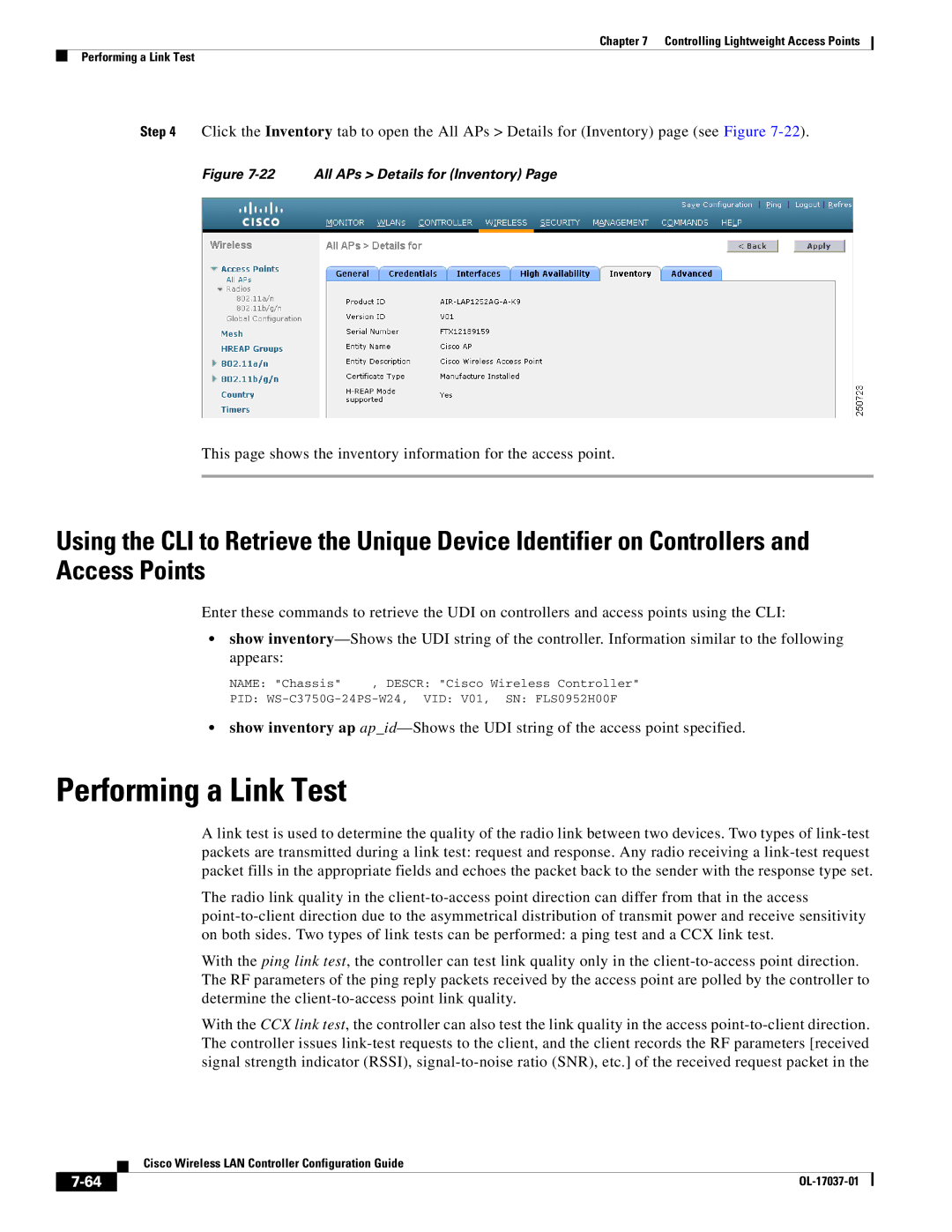Chapter 7 Controlling Lightweight Access Points
Performing a Link Test
Step 4 Click the Inventory tab to open the All APs > Details for (Inventory) page (see Figure 7-22).
Figure 7-22 All APs > Details for (Inventory) Page
This page shows the inventory information for the access point.
Using the CLI to Retrieve the Unique Device Identifier on Controllers and Access Points
Enter these commands to retrieve the UDI on controllers and access points using the CLI:
•show inventory—Shows the UDI string of the controller. Information similar to the following appears:
NAME: "Chassis" , DESCR: "Cisco Wireless Controller"
PID: WS-C3750G-24PS-W24, VID: V01, SN: FLS0952H00F
•show inventory ap ap_id—Shows the UDI string of the access point specified.
Performing a Link Test
A link test is used to determine the quality of the radio link between two devices. Two types of link-test packets are transmitted during a link test: request and response. Any radio receiving a link-test request packet fills in the appropriate fields and echoes the packet back to the sender with the response type set.
The radio link quality in the client-to-access point direction can differ from that in the access point-to-client direction due to the asymmetrical distribution of transmit power and receive sensitivity on both sides. Two types of link tests can be performed: a ping test and a CCX link test.
With the ping link test, the controller can test link quality only in the client-to-access point direction. The RF parameters of the ping reply packets received by the access point are polled by the controller to determine the client-to-access point link quality.
With the CCX link test, the controller can also test the link quality in the access point-to-client direction. The controller issues link-test requests to the client, and the client records the RF parameters [received signal strength indicator (RSSI), signal-to-noise ratio (SNR), etc.] of the received request packet in the
| Cisco Wireless LAN Controller Configuration Guide |
7-64 | OL-17037-01 |

